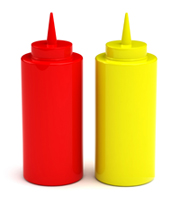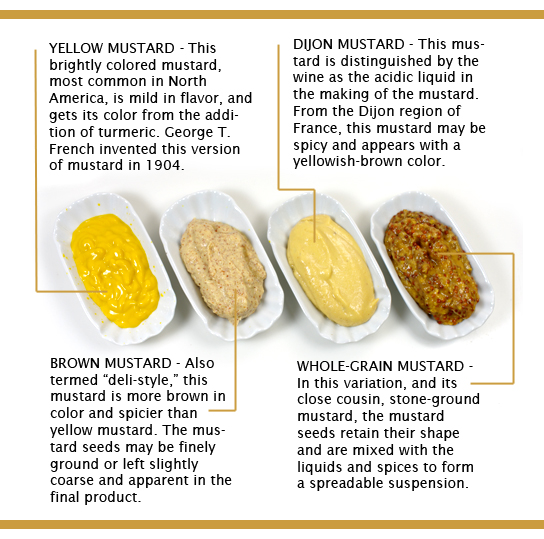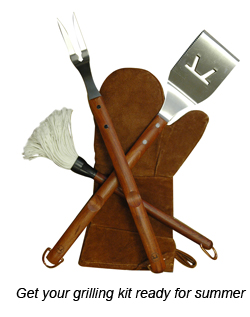
|
Ketchup and Mustard |
|---|
Open nearly any refrigerator in America and you'll find in the door shelves a container of ketchup and at least one type of mustard. But what do we know about these ubiquitous condiments?  His secret was to use ripe tomatoes, pickle them with vinegar, and then concentrate the sauce. Ketchup is considered good if it is thick, does not separate, and, of course, tastes great. The secret to ketchup's huge fan base lies in its ingredients. Ketchup contains tomato, vinegar, sugar, salt, spices, and herbs. This mélange of flavors hits all of our taste buds - sweet, salty, sour, bitter, and the fifth taste, umami. With all cylinders firing at once, no wonder ketchup registers pleasure in our mouths. His secret was to use ripe tomatoes, pickle them with vinegar, and then concentrate the sauce. Ketchup is considered good if it is thick, does not separate, and, of course, tastes great. The secret to ketchup's huge fan base lies in its ingredients. Ketchup contains tomato, vinegar, sugar, salt, spices, and herbs. This mélange of flavors hits all of our taste buds - sweet, salty, sour, bitter, and the fifth taste, umami. With all cylinders firing at once, no wonder ketchup registers pleasure in our mouths. |
Cooking with Fire |
Why do people grill? Anthropologists might point to some primeval connection to fire, the chemist might point to the Maillard reaction occurring during browning, but a modern interpretation might land on the simplest of answers - it tastes good! To enjoy your grilling life to the max, keep these ideas in mind: Keep the Grill Clean! - We can't emphasize this enough. A clean grill will allow your food to keep their true grilled flavors without any compromise from burnt pieces, ash, or other leftovers from the last grilling session. Use a wire brush to scrape away any stuck on food. Be religious in keeping your grill clean and you'll be rewarded with great tasting food and a long-lasting grill. Keep the Grill Clean! - We can't emphasize this enough. A clean grill will allow your food to keep their true grilled flavors without any compromise from burnt pieces, ash, or other leftovers from the last grilling session. Use a wire brush to scrape away any stuck on food. Be religious in keeping your grill clean and you'll be rewarded with great tasting food and a long-lasting grill.Oil the Grate - Once clean, oil the preheated grate with a paper towel soaked with an oil of your choice and held by a pair of tongs. The thin coat of oil will keep foods from sticking and simultaneously allow for easier clean up later. Expand your Grilling Life - Explore burgers on the grill, but don't forget all of the other foods that would benefit from the magic of the grill. Master the tradition of meat on the grill with beef cuts, but don't forget pork, chicken, turkey, and seafood. You may like to experiment with less common meats such as buffalo, ostrich, emu, or game. Vegetables on the grill are hard to match, as are grilled fruits. Baskets, Skewers, Mats - A few key tools can make your grilling explorations instantly more successfully. Grill baskets allow for small pieces of seafood or vegetables to be grilled easily without any loss through the grate. Explore the many skewers we have for kabob grilling; each has its distinct use and advantage. Grilling mats, like grilling baskets keep food from falling through the grate while allowing the fire and smoke to infuse into the food. Mats are particularly useful for grilling fish and vegetables. |